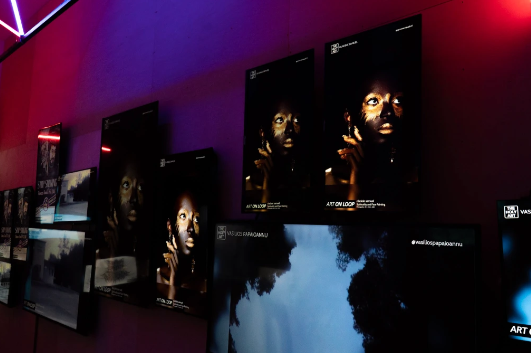The Intersection of Tradition and Modernity: A Review of Samuel Oladele’s Face of Spirituality
Written by Ade Olusola Kunmi
Samuel Oladele’s recent exhibition, Face of Spirituality, presented at The Holy Art Gallery, is a mesmerizing exploration of African spirituality through the medium of portrait photography. The series taps into the ancient practice of face painting, a ritual often infused with deep cultural and spiritual significance, as seen in many African traditions, including those of the Yoruba people from whom Oladele draws his inspiration. The result is a body of work that is not only visually arresting but also spiritually evocative.
Oladele, a Nigerian artist, skillfully integrates face painting with the aesthetics of his models, creating images that tell layered stories of identity, tradition, and transcendence. Just as face painting in many African cultures goes beyond mere decoration, his works suggest a portal into deeper realms of spiritual expression. In Yoruba culture, for example, face painting is often used in religious and cultural activities. The Obitun dance of the Ondo people, where dancers are adorned with painted faces and bodies, serves as a clear reference point in Oladele’s work. This connection to his cultural heritage enriches the narrative of Face of Spirituality, making each portrait a reflection of ancestral continuity and modern artistic sensibilities.
Oladele’s use of color is one of the most striking aspects of this series. Set against a dark, almost shadowy background, the models are illuminated by vibrant face paintings that range in hues from gold to blue and white. This stark contrast between the somber backdrop and the bright colors of the face paintings ensures that the viewer’s attention is drawn immediately to the subject’s face— the heart of the work. The deliberate choice of dark tones creates a dramatic atmosphere, one that invokes the mysticism often associated with spiritual experiences. It invites viewers to step closer, to peer into the faces for stories that transcend the physical.
What sets Face of Spirituality apart is its ability to blend the traditional with the contemporary. Oladele’s modern interpretation of face painting, while rooted in centuries-old customs, is reimagined for today’s audience. His photography does more than just capture a moment in time; it captures an entire spiritual ethos. The sharp, clean lines of the face paint, the deliberate use of bright tones, and the solemn expressions of his models all work in harmony to convey not only beauty but also the powerful connection between the body and the spirit.
By focusing on the face, Oladele makes an artistic statement about identity and spiritual awareness. The face, after all, is often considered a window to the soul, and in Face of Spirituality, it becomes the canvas through which stories of power, resilience, and faith are told. Each portrait feels like a moment of stillness in a chaotic world, a reminder that spiritual beauty can be found in the quiet, contemplative moments as well as in the vibrancy of cultural expression.
Oladele’s mastery of color and light is evident throughout the series. The interplay of colors not only adds depth to the portraits but also enhances the emotional resonance of the work. The face paintings themselves are intricate, yet not overly elaborate, allowing for an intimacy between the subject and the viewer. This creates a subtle, yet profound, emotional connection.
At its core, Face of Spirituality is a powerful exploration of what it means to be African in the modern world while remaining rooted in ancient customs. The series captures the complexity of spirituality in contemporary African life, where tradition and modernity often intersect in unexpected ways. Oladele has skillfully used his lens to reflect this duality, crafting portraits that are as much about the internal world of his subjects as they are about the external, cultural symbols adorning their faces.
Samuel Oladele’s Face of Spirituality is a compelling body of work that immerses viewers in a vibrant, spiritual narrative. His thoughtful use of color, light, and symbolism makes this series an insightful contribution to contemporary African art. It is a celebration of spirituality, identity, and culture that leaves a lasting impression. Oladele’s ability to capture both the beauty and the depth of African spirituality through face painting sets him apart as an artist with a profound understanding of his cultural roots and a unique voice in modern art.





